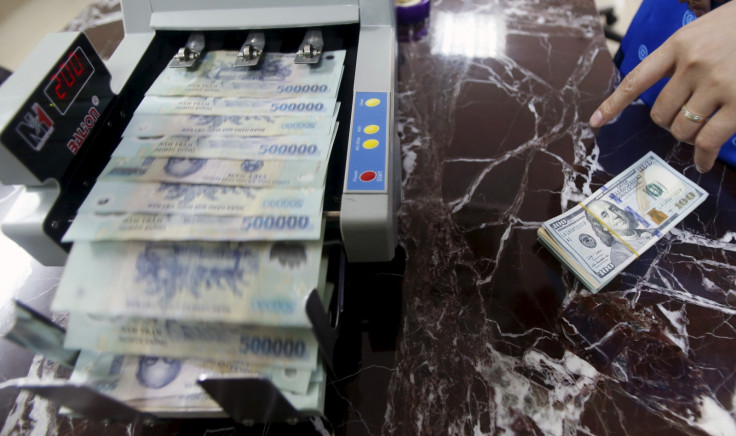Vietnam devalues currency for third time to maintain export competitiveness

The State Bank of Vietnam (SBV) has devalued the dong for a third time in 2015, as the Asian country looks to maintain its export competitiveness after China devalued the yuan for its advantage.
The central bank raised its reference rate by 1% to 21,890 dong per US dollar, and widened the trading band further to 3% higher or lower from the reference rate. The currency now can trade within a range between 21,233 and 22,547.
Last week, the SBV widened the trading band to 2% from 1%, following China's devaluation.
"After the strong devaluation of the yuan, Vietnam's domestic market sentiment is still very much concerned about the impact of the U.S. Federal Reserve's rate increase," the central bank said in its statement.
The rate adjustment will further ease the pressure on the central bank to intervene in the currency market, depleting the foreign reserves currently at $37bn (£23.7bn, €33.5bn), according to economists at ANZ bank.
"Even in the absence of further policy adjustments in the rest of the year, the VND could depreciate by a maximum of 5.1% this year (4.5% year-to-date) vs annual depreciation of around 1.3% in the previous two years," they said in a note.
"The Vietnamese Dong has been one of the more resilient currencies amidst the EM Asia currency downdraft of recent months. Some re-alignment of the currency therefore seems warranted from a macro-balance perspective."
Vietnam recorded a trade deficit of $300m in July as export growth slowed to 9.5% in the first seven months of 2015.
The dong has declined 4.6% in 2015, while the currencies in Malaysia and Indonesia have dropped 14.7% and 10.5%, respectively. As a result, the country's exporters were at a relative disadvantage.
The dong fell 1.4% to 22,408 as of 10.36 am in Hanoi, according to data compiled by Bloomberg.
© Copyright IBTimes 2024. All rights reserved.







